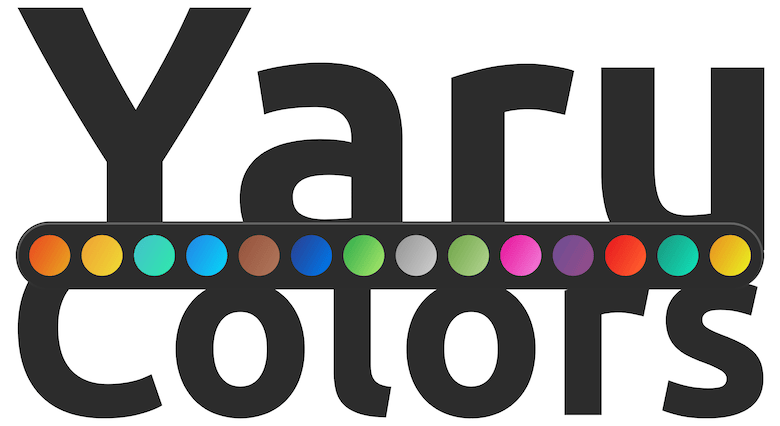How To Install Yaru-Colors on Ubuntu

Ubuntu, one of the most popular Linux distributions, comes with a sleek and modern default theme called Yaru. While Yaru offers a visually appealing interface, many users seek further customization options to personalize their desktop experience. This is where Yaru-Colors comes into play. Yaru-Colors is a versatile theme that allows you to customize your Ubuntu desktop with a wide range of color variants, giving you the freedom to create a unique and visually striking environment tailored to your preferences.
What is Yaru-Colors?
Yaru-Colors is a custom theme designed specifically for Ubuntu, built upon the foundation of the standard Yaru theme. It offers a collection of color variants that can be easily applied to various elements of the desktop interface, such as windows, buttons, and icons. By installing Yaru-Colors, users can transform the look and feel of their Ubuntu system, making it more vibrant, stylish, and personalized. The theme is developed and maintained by the community, ensuring regular updates and improvements to enhance the user experience.
Prerequisites
Before proceeding with the installation of Yaru-Colors, it’s essential to ensure that your Ubuntu system meets the necessary prerequisites. First and foremost, you’ll need to have GNOME Tweaks installed, as it provides a user-friendly interface for managing and applying themes. Additionally, Git is required to clone the Yaru-Colors repository from GitHub. Make sure your system has sufficient disk space and meets the minimum system requirements for a smooth installation process.
Step-by-Step Installation Guide
Running System Update
To begin the installation process, it’s crucial to update your Ubuntu system to the latest version. This ensures that you have access to the most recent packages and dependencies required for Yaru-Colors. Open a terminal and run the following commands to refresh the system cache and update the packages:
sudo apt update
sudo apt upgrade
Installing Required Packages
Next, you’ll need to install GNOME Tweaks and Git if they are not already present on your system. GNOME Tweaks provides an intuitive interface for managing themes, while Git is necessary for cloning the Yaru-Colors repository. Use the following commands to install these packages:
sudo apt install gnome-tweaks
sudo apt install git
Downloading Yaru-Colors
With the prerequisites in place, you can now proceed to download Yaru-Colors from its GitHub repository. Open a terminal and navigate to the directory where you want to store the theme files. Then, use the following command to clone the repository:
git clone https://github.com/Jannomag/Yaru-Colors.git
Running the Installation Script
Once the repository is cloned, navigate to the Yaru-Colors directory using the terminal. Inside the directory, you’ll find an installation script that automates the process of installing the theme. Run the following command to execute the script:
./install.sh
The installation script will prompt you with various options, such as selecting the desired color variant and whether to enable the theme for GTK and GNOME Shell. Follow the on-screen instructions and make your choices accordingly. The script will then proceed to install Yaru-Colors on your Ubuntu system.
Enabling the Theme
After the installation is complete, you can enable Yaru-Colors using GNOME Tweaks. Open GNOME Tweaks from the application menu or by running the following command in the terminal:
gnome-tweaks
In the GNOME Tweaks window, navigate to the “Appearance” section. Under the “Themes” tab, you’ll find options to select the GTK and GNOME Shell themes. Choose the desired Yaru-Colors variant from the dropdown menus and apply the changes. Your Ubuntu desktop will now reflect the selected color scheme.
Exploring Yaru-Colors Variants
Yaru-Colors offers a wide range of color variants to suit different tastes and preferences. Some popular variants include:
- Yaru-Blue: A calming and professional blue color scheme.
- Yaru-Purple: A vibrant and modern purple theme.
- Yaru-Red: A bold and energetic red variant.
- Yaru-Green: A fresh and natural green color scheme.
Feel free to explore the different variants and find the one that resonates with your style. You can easily switch between variants using GNOME Tweaks, allowing you to experiment and find the perfect look for your Ubuntu desktop.
Troubleshooting Common Issues
While the installation process of Yaru-Colors is generally straightforward, you may encounter a few common issues. If the theme doesn’t appear in GNOME Tweaks after installation, try logging out and logging back in to refresh the theme cache. If you experience any visual glitches or inconsistencies, make sure you have the latest version of Yaru-Colors installed and that your system is up to date.
If you encounter any other problems or have questions, refer to the Yaru-Colors GitHub repository for additional troubleshooting tips and support. The community is active and helpful, and you can find answers to common queries or seek further assistance.